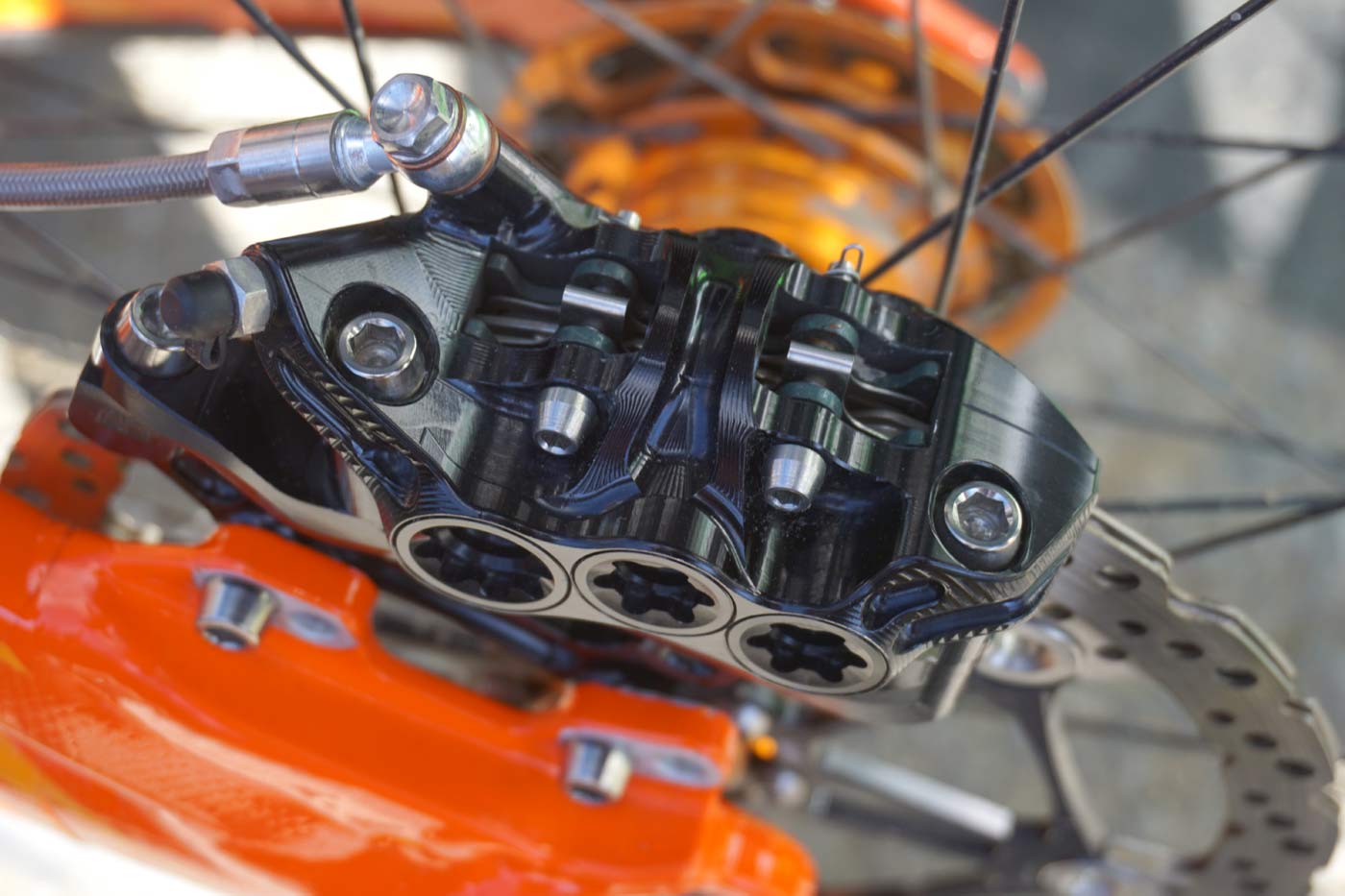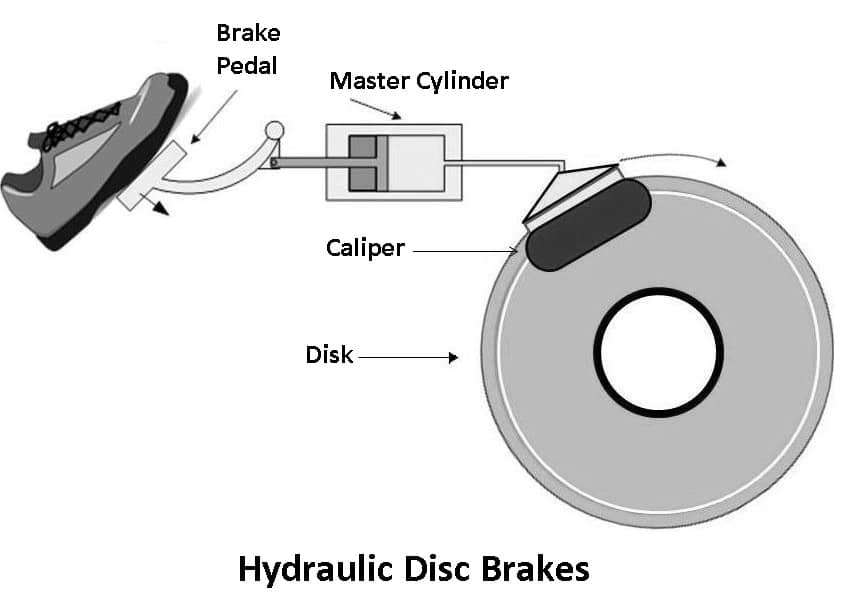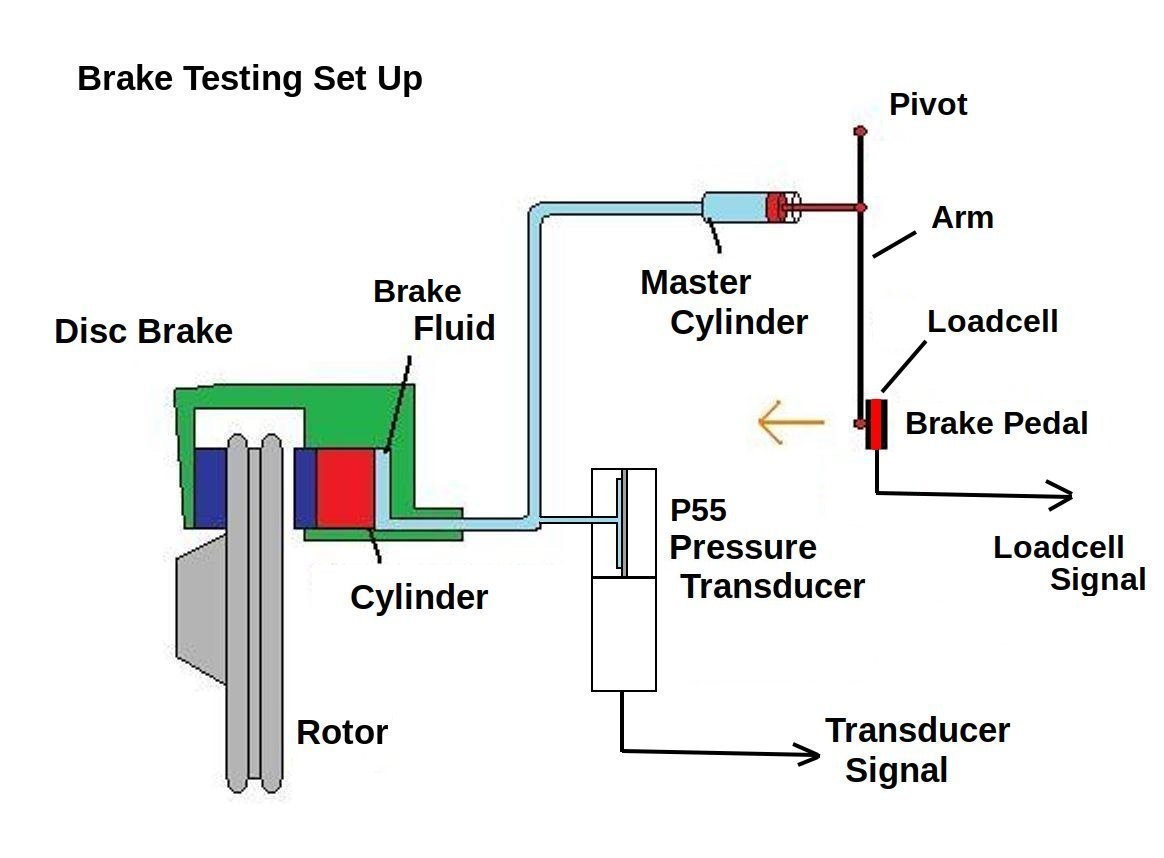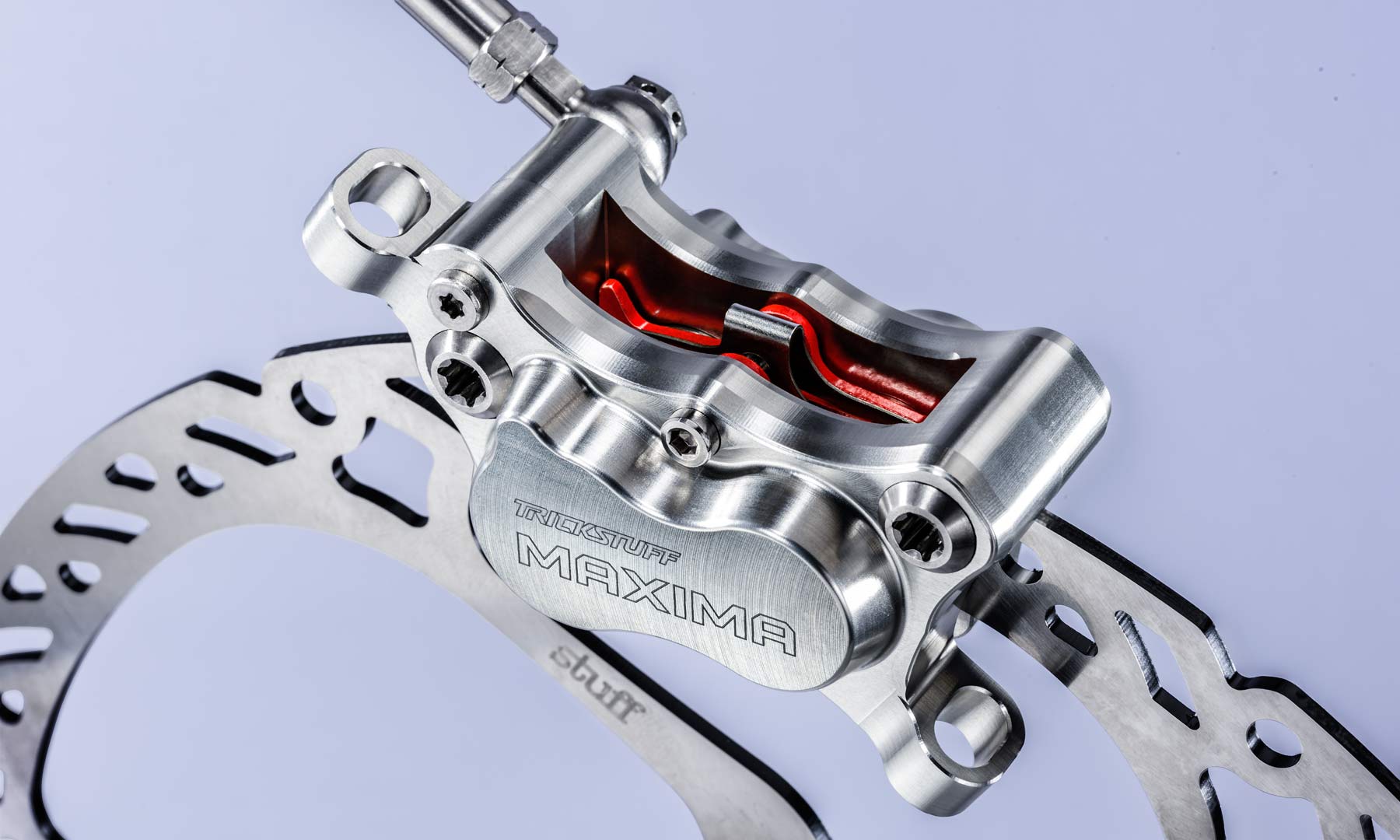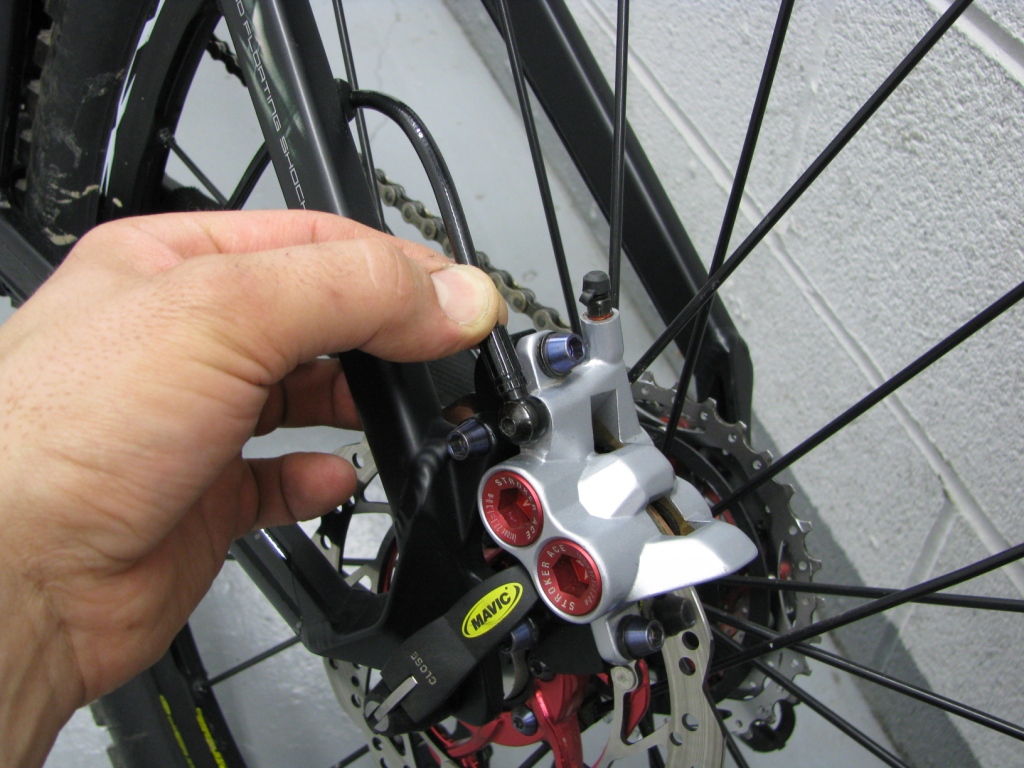What Makes Hydraulic Brakes the Top Choice for Mountain Bikers
When it comes to mountain biking, having reliable and efficient brakes is crucial for a safe and enjoyable ride. Hydraulic mountain bike brakes have become the top choice among mountain bikers due to their improved stopping power, reduced maintenance, and increased control. Unlike traditional rim brakes, hydraulic brakes use fluid pressure to transfer braking power, resulting in a more consistent and reliable braking performance.
One of the primary advantages of hydraulic brakes is their ability to provide consistent braking power in various weather conditions. Whether riding in wet or dry conditions, hydraulic brakes maintain their stopping power, giving riders more confidence and control on the trails. Additionally, hydraulic brakes require less maintenance than traditional rim brakes, as they are less prone to wear and tear.
Popular hydraulic brake systems like Shimano XT and SRAM Guide have become industry standards, offering high-performance braking capabilities and durability. These systems feature advanced technologies, such as adjustable lever reach and bite point, allowing riders to customize their braking experience. Furthermore, hydraulic brakes are designed to work seamlessly with modern mountain bike components, ensuring a smooth and efficient braking performance.
Another significant benefit of hydraulic brakes is their ability to provide increased control and modulation. With hydraulic brakes, riders can apply gentle and precise braking pressure, allowing for more control and finesse on technical trails. This increased control also enables riders to maintain speed and momentum, making hydraulic brakes an ideal choice for aggressive and technical mountain biking.
In conclusion, hydraulic mountain bike brakes offer a range of benefits that make them the top choice among mountain bikers. With their improved stopping power, reduced maintenance, and increased control, hydraulic brakes provide a safer and more enjoyable riding experience. Whether riding cross-country or downhill, hydraulic brakes are an essential component for any serious mountain biker.
How to Choose the Right Hydraulic Brake System for Your Mountain Bike
Selecting the perfect hydraulic brake system for your mountain bike can be a daunting task, especially with the numerous options available in the market. However, by considering a few key factors, you can make an informed decision and choose a brake system that meets your riding needs and preferences.
First and foremost, consider your riding style. If you’re an aggressive downhill rider, you’ll require a brake system with high stopping power and durability. On the other hand, if you’re a cross-country rider, you may prioritize a lighter and more efficient brake system. Popular hydraulic brake systems like Shimano XT and SRAM Guide offer a range of options to suit different riding styles.
Terrain is another crucial factor to consider when choosing a hydraulic brake system. If you ride in wet and muddy conditions, you’ll require a brake system with good modulation and control. In contrast, if you ride in dry and rocky terrain, you may prioritize a brake system with high stopping power and durability.
Budget is also an essential consideration when selecting a hydraulic brake system. While high-end brake systems offer advanced features and improved performance, they can be expensive. However, there are also affordable options available that offer excellent value for money.
When reading reviews and comparing different models, look for key features such as brake pad material, rotor size, and lever ergonomics. Also, consider the weight and durability of the brake system, as well as its compatibility with your mountain bike’s components.
Some popular hydraulic brake systems to consider include:
- Shimano XT: Known for its high stopping power and durability, the Shimano XT is a popular choice among downhill and enduro riders.
- SRAM Guide: The SRAM Guide offers excellent modulation and control, making it a great option for cross-country and trail riders.
- Magura MT: The Magura MT is a high-end brake system that offers advanced features such as adjustable lever reach and bite point.
By considering these factors and doing your research, you can choose a hydraulic brake system that meets your riding needs and preferences. Remember to always test ride a brake system before purchasing to ensure it feels comfortable and performs well on your mountain bike.
Understanding the Anatomy of a Hydraulic Brake System
A hydraulic brake system consists of several key components that work together to provide reliable and consistent braking performance. Understanding the anatomy of a hydraulic brake system is essential for proper installation, maintenance, and troubleshooting.
The master cylinder is the brain of the hydraulic brake system, responsible for converting the rider’s input into hydraulic pressure. It consists of a reservoir, a piston, and a seal. The reservoir stores the brake fluid, while the piston and seal work together to create the hydraulic pressure.
The slave cylinder, also known as the caliper, is responsible for applying the hydraulic pressure to the brake pads. It consists of a housing, a piston, and a seal. The housing contains the brake pads, while the piston and seal work together to apply the hydraulic pressure to the pads.
The brake pads are the components that make contact with the rotor, providing the friction necessary for braking. They are typically made of a semi-metallic or organic material and are designed to wear down over time.
The rotor is the metal disc that the brake pads make contact with. It is typically made of a heat-resistant material, such as steel or aluminum, and is designed to withstand the high temperatures generated by braking.
Other key components of a hydraulic brake system include the brake lines, which connect the master cylinder to the slave cylinder, and the brake levers, which provide the rider’s input to the master cylinder.
When a rider applies the brakes, the following process occurs:
- The rider applies pressure to the brake lever, which activates the master cylinder.
- The master cylinder converts the rider’s input into hydraulic pressure, which is transmitted through the brake lines to the slave cylinder.
- The slave cylinder applies the hydraulic pressure to the brake pads, which make contact with the rotor.
- The friction between the brake pads and the rotor slows down the wheel, providing the braking action.
Understanding the anatomy of a hydraulic brake system is essential for proper installation, maintenance, and troubleshooting. By knowing how the different components work together, riders can ensure that their brakes are functioning properly and safely.
Tips for Installing and Setting Up Your Hydraulic Brake System
Installing and setting up a hydraulic brake system can be a daunting task, but with the right guidance, it can be done efficiently and effectively. In this section, we will provide a comprehensive guide on how to install and set up your hydraulic brake system, including bleeding the brakes, adjusting the lever, and fine-tuning the caliper.
Before starting the installation process, make sure you have all the necessary tools and components, including the brake system, brake pads, and rotor. It’s also essential to consult the manufacturer’s instructions and recommendations for specific installation procedures.
Bleeding the brakes is a critical step in the installation process. It involves removing any air that may have entered the brake lines during the installation process. To bleed the brakes, you will need a brake bleeding kit, which typically includes a bleeding block, a hose, and a wrench. Follow the manufacturer’s instructions for bleeding the brakes, and make sure to use the correct brake fluid.
Adjusting the lever is another crucial step in the installation process. The lever should be adjusted to fit comfortably in your hand, with the correct amount of free play. To adjust the lever, loosen the lever clamp and move the lever to the desired position. Then, tighten the lever clamp to secure the lever in place.
Fine-tuning the caliper is the final step in the installation process. The caliper should be adjusted to fit snugly around the rotor, with the correct amount of clearance. To fine-tune the caliper, loosen the caliper bolts and move the caliper to the desired position. Then, tighten the caliper bolts to secure the caliper in place.
Proper setup is essential for optimal performance and safety. Make sure to test the brakes thoroughly after installation, and adjust the lever and caliper as needed. It’s also essential to maintain the brake system regularly, including cleaning and lubricating the components, and replacing brake pads and rotors as needed.
Some additional tips to keep in mind when installing and setting up your hydraulic brake system include:
- Use the correct brake fluid and follow the manufacturer’s instructions for bleeding the brakes.
- Make sure the brake pads are properly seated and aligned with the rotor.
- Adjust the lever and caliper to fit comfortably and snugly around the rotor.
- Test the brakes thoroughly after installation, and adjust the lever and caliper as needed.
By following these tips and guidelines, you can ensure a safe and efficient installation and setup of your hydraulic brake system, and enjoy optimal performance and safety on the trails.
Common Issues and Troubleshooting Tips for Hydraulic Brake Systems
Hydraulic brake systems are generally reliable and efficient, but like any complex system, they can be prone to issues and problems. In this section, we will discuss common issues that can arise with hydraulic brake systems, and provide troubleshooting tips and solutions to help readers resolve these issues.
One of the most common issues with hydraulic brake systems is air in the lines. This can cause the brakes to feel spongy or soft, and can lead to reduced braking performance. To troubleshoot this issue, try bleeding the brakes to remove any air that may have entered the system.
Another common issue is brake pad wear. Over time, the brake pads can wear down, reducing the effectiveness of the brakes. To troubleshoot this issue, try inspecting the brake pads and replacing them if necessary.
Lever issues are also common, particularly if the lever is not adjusted properly. To troubleshoot this issue, try adjusting the lever to fit comfortably in your hand, and make sure it is properly secured to the handlebars.
Other common issues with hydraulic brake systems include:
- Brake fluid leaks: Check the brake lines and connections for any signs of leaks, and replace the brake fluid if necessary.
- Caliper issues: Check the caliper for any signs of damage or wear, and replace it if necessary.
- Rotor issues: Check the rotor for any signs of damage or wear, and replace it if necessary.
To troubleshoot these issues, try the following steps:
- Check the brake system for any signs of damage or wear.
- Consult the manufacturer’s instructions for troubleshooting and repair procedures.
- Seek professional help if you are unsure of how to troubleshoot or repair the issue.
By following these troubleshooting tips and solutions, you can help resolve common issues with hydraulic brake systems and ensure optimal performance and safety on the trails.
Some additional tips to keep in mind when troubleshooting hydraulic brake systems include:
- Always follow the manufacturer’s instructions for troubleshooting and repair procedures.
- Use the correct tools and equipment when working on the brake system.
- Test the brakes thoroughly after making any repairs or adjustments.
By being aware of common issues and knowing how to troubleshoot and repair them, you can help ensure the optimal performance and safety of your hydraulic mountain bike brakes.
Real-World Reviews: Top Hydraulic Brake Systems for Mountain Bikes
In this section, we will review and compare some of the top hydraulic brake systems for mountain bikes, including the Shimano XT, SRAM Guide, and Magura MT. We will highlight their strengths, weaknesses, and ideal use cases, to help readers make an informed decision when choosing a hydraulic brake system for their mountain bike.
Shimano XT is one of the most popular hydraulic brake systems for mountain bikes, known for its reliability, durability, and high-performance braking capabilities. The Shimano XT features a compact and lightweight design, making it ideal for cross-country and trail riding. However, it may not be the best choice for downhill or enduro riding, as it lacks the power and modulation of more advanced brake systems.
SRAM Guide is another top hydraulic brake system for mountain bikes, known for its high-performance braking capabilities and advanced features such as adjustable lever reach and bite point. The SRAM Guide is ideal for downhill and enduro riding, as it provides excellent power and modulation, but may be too expensive for some riders.
Magura MT is a high-end hydraulic brake system for mountain bikes, known for its exceptional braking performance and advanced features such as adjustable lever reach and bite point. The Magura MT is ideal for professional riders and serious enthusiasts, as it provides unparalleled braking performance and durability, but may be too expensive for some riders.
Other notable hydraulic brake systems for mountain bikes include the Shimano SLX, SRAM Level, and Hope Tech 3. These brake systems offer a range of features and performance capabilities, making them suitable for different types of riding and budgets.
When choosing a hydraulic brake system for your mountain bike, consider the following factors:
- Riding style: Consider the type of riding you will be doing most often, such as cross-country, trail, downhill, or enduro.
- Terrain: Consider the terrain you will be riding on, such as smooth trails, rocky terrain, or steep descents.
- Budget: Consider your budget and the cost of the brake system, as well as any additional components or accessories you may need.
By considering these factors and reading reviews from other riders, you can make an informed decision when choosing a hydraulic brake system for your mountain bike.
Some additional tips to keep in mind when choosing a hydraulic brake system include:
- Look for brake systems with advanced features such as adjustable lever reach and bite point.
- Consider the weight and durability of the brake system.
- Read reviews from other riders to get a sense of the brake system’s performance and reliability.
By following these tips and considering the factors mentioned above, you can choose a hydraulic brake system that meets your needs and provides reliable and high-performance braking capabilities for your mountain bike.
How to Maintain and Upgrade Your Hydraulic Brake System
Maintaining and upgrading your hydraulic brake system is essential to ensure optimal performance and safety on the trails. In this section, we will provide advice on how to maintain and upgrade your hydraulic brake system, including cleaning and lubricating the components, replacing brake pads, and upgrading to new levers or calipers.
Cleaning and lubricating the components of your hydraulic brake system is crucial to ensure smooth and consistent braking performance. Use a soft brush and mild soap to clean the brake pads, caliper, and rotor. Then, apply a small amount of lubricant to the pivot points and moving parts.
Replacing brake pads is a relatively simple process that can be done at home with the right tools and knowledge. Make sure to choose the correct type and size of brake pads for your hydraulic brake system, and follow the manufacturer’s instructions for installation.
Upgrading to new levers or calipers can significantly improve the performance and feel of your hydraulic brake system. Consider upgrading to a higher-end lever or caliper that offers improved ergonomics, adjustability, and braking power.
Some additional tips to keep in mind when maintaining and upgrading your hydraulic brake system include:
- Regularly inspect the brake pads and rotor for wear and damage.
- Use the correct type and amount of brake fluid for your hydraulic brake system.
- Avoid mixing different types of brake fluid, as this can cause contamination and damage to the system.
- Consider upgrading to a brake system with advanced features such as adjustable lever reach and bite point.
By following these tips and maintaining and upgrading your hydraulic brake system regularly, you can ensure optimal performance and safety on the trails.
Some popular upgrade options for hydraulic brake systems include:
- Shimano XT and SRAM Guide levers, which offer improved ergonomics and adjustability.
- Magura MT and Hope Tech 3 calipers, which offer improved braking power and modulation.
- Brake pads from companies like Shimano, SRAM, and Magura, which offer improved durability and braking performance.
By upgrading your hydraulic brake system with these components, you can take your mountain biking to the next level and enjoy improved performance and safety on the trails.
Conclusion: Take Your Mountain Biking to the Next Level with Hydraulic Brakes
In conclusion, hydraulic mountain bike brakes offer a range of benefits that can take your mountain biking to the next level. With improved stopping power, reduced maintenance, and increased control, hydraulic brakes are the top choice for mountain bikers. By understanding the anatomy of a hydraulic brake system, choosing the right system for your mountain bike, and maintaining and upgrading your system regularly, you can enjoy optimal performance and safety on the trails.
Whether you’re a seasoned pro or just starting out, hydraulic mountain bike brakes are a worthwhile investment for any serious mountain biker. With their reliability, durability, and high-performance braking capabilities, hydraulic brakes can help you ride with confidence and precision, even in the most challenging terrain.
So why settle for inferior braking performance when you can upgrade to a reliable and high-performance hydraulic brake system? Take your mountain biking to the next level with hydraulic brakes and experience the thrill of riding with confidence and precision.
Remember, hydraulic mountain bike brakes are a critical component of your mountain bike, and choosing the right system can make all the difference in your riding experience. By following the tips and advice outlined in this article, you can make an informed decision when choosing a hydraulic brake system and enjoy optimal performance and safety on the trails.
Don’t wait any longer to upgrade your mountain bike with a reliable and high-performance hydraulic brake system. Take the first step today and experience the thrill of riding with confidence and precision.


